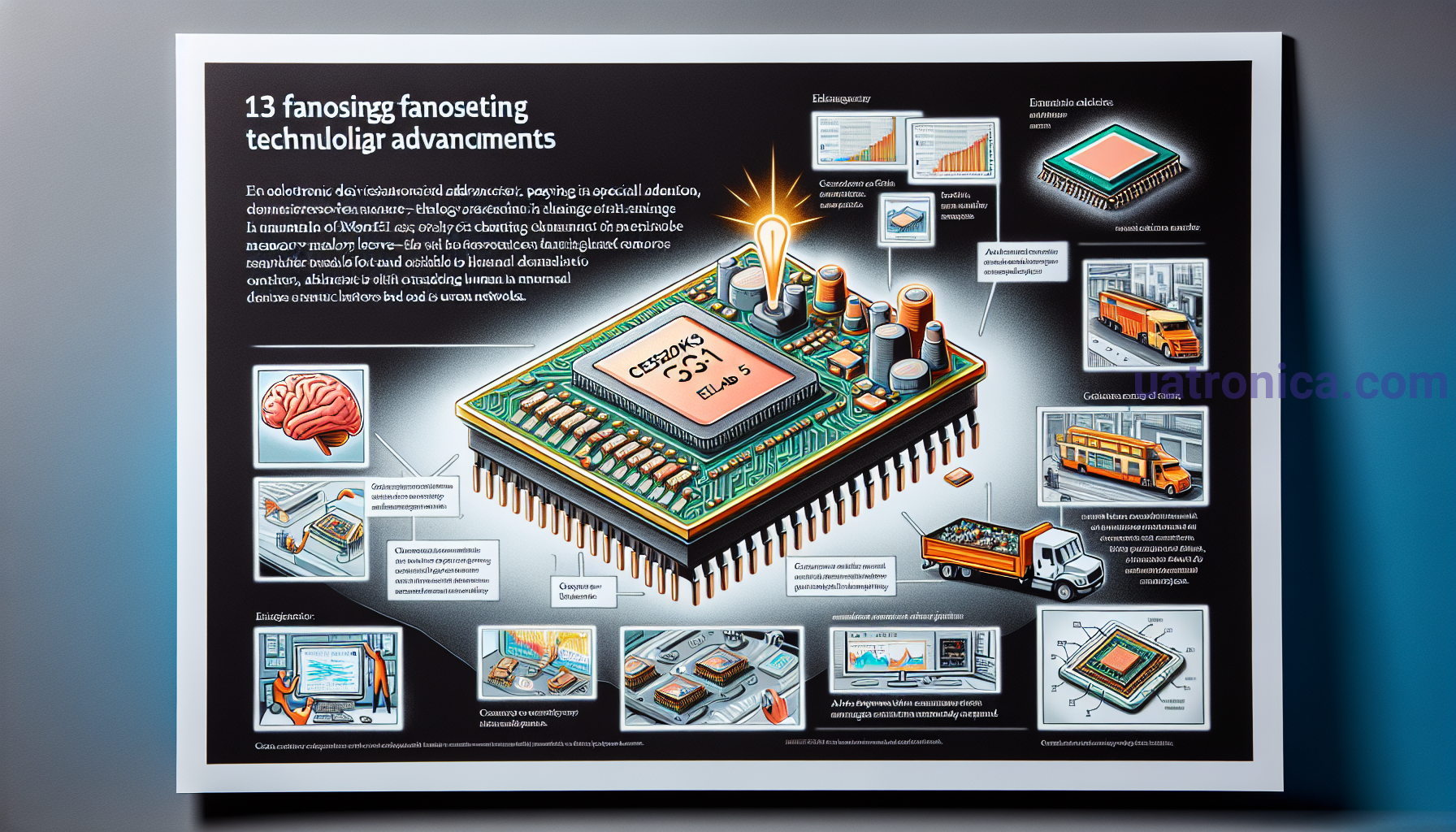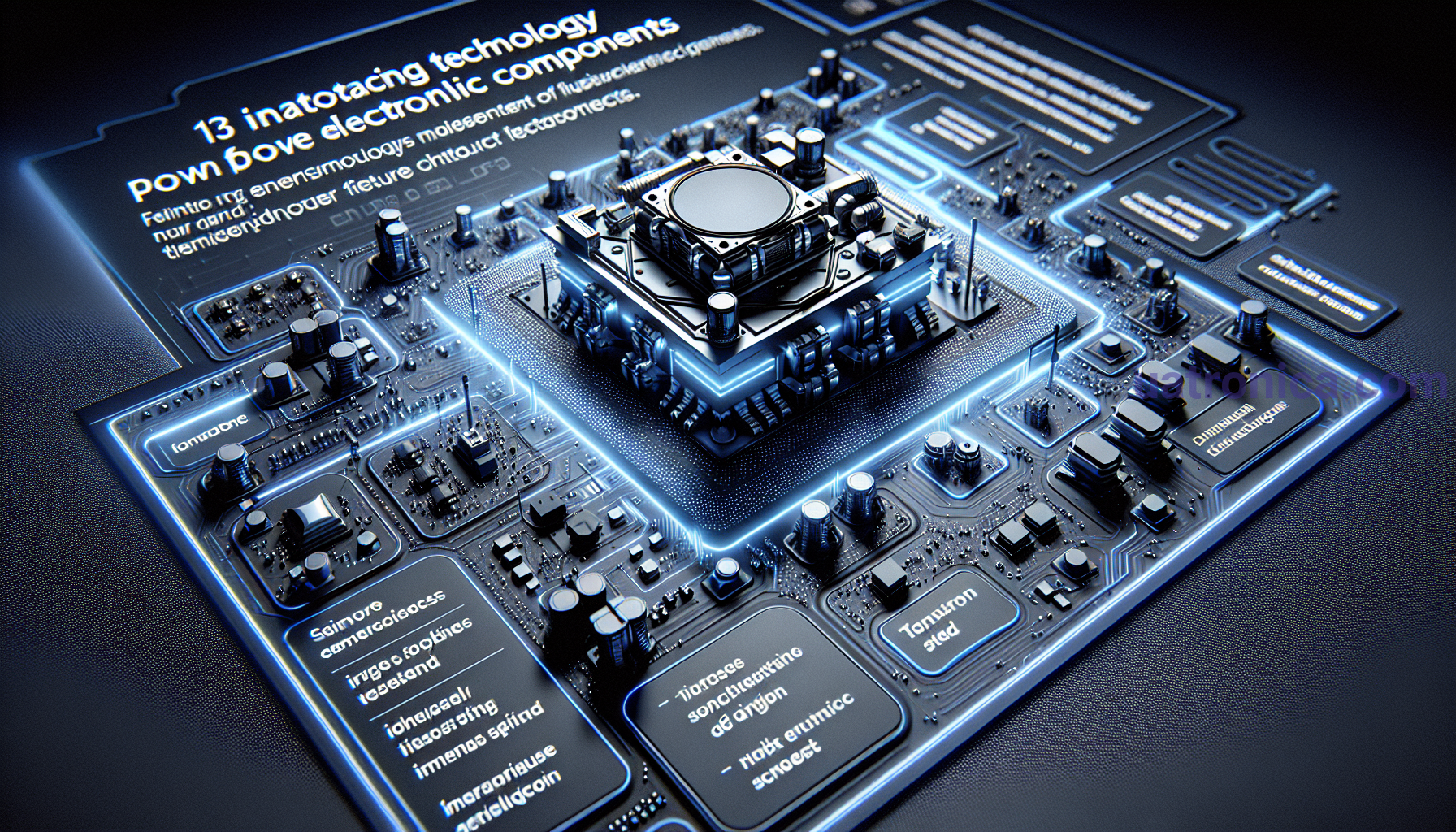Introduction
The modern world of semiconductor technologies is in a state of active development. The speed of scientific progress in this field dictates new trends in the field of electronics. In this article, we take a look at 13 exciting technological developments in the semiconductor industry that could change the future of electronics.
1. Ultra-thin film for solar batteries
One of the most intriguing technological developments in the field of semiconductors is the creation of ultra-thin films for solar cells. This technology makes it possible to create flexible solar panels that can be easily used in various fields: from consumer electronics to satellites. With the help of such panels, we can ensure efficient conversion of solar energy and reduce the negative impact on the environment.
Related article: 13 Exciting Scientific Advances in the World of Semiconductors: An Overview
2. Superhard semiconductors
Another innovative technological development is the creation of superhard semiconductors. This type of semiconductor materials is characterized by extreme hardness and resistance to wear. They are used in the production of microcircuits, batteries, sensors and other devices, where it is important to have a material with high strength and stability.
3. Quantum dots
Quantum dots are microscopic regions of a semiconductor whose size is measured in nanometers. They have unique properties that allow them to be used in many industries, including electronics, medicine, and energy. Quantum dots are used to create efficient LEDs, sensors, solar batteries, as well as to diagnose and treat diseases.
4. Graphene
Graphene is a single-layer structure of graphite, which consists of carbon atoms arranged in hexagonal cells. This material has many interesting properties, such as high conductivity, mechanical strength and thermal conductivity. Graphene is used in electronics to create fast transistors, quantum dots, sensors and other devices.

Related Product: CE3520K3-C1 CELAB
5. Memristors
A memristor is an electronic device that can store states similar to the memory levers of human information systems. He has the ability to change his physical properties, depending on the state in which he is. Memristors are used to create fast and efficient flash memories, artificial neural networks, as well as to implement new forms of communication between electronics and people.
6. Semiconductor nanowires
Semiconductor nanowires are microscopic wires made of semiconductor materials such as silicon or germanium. Their diameter is usually a few nanometers, which makes them unique tools for creating miniature electronic devices. Semiconductor nanowires are used in electronics, photonics, photovoltaics and other areas where high miniaturization and low energy consumption are required.
7. Organic electrons
Organic electrons are super-strong flexible films used in organic electronics. They are made of polymer materials that have a high capacity to carry electric current. Organic electrons are used in flexible screens, solar cells, organic LEDs, sensors and other devices.
8. Photovoltaic glass
Photovoltaic glass is glass that has the properties of a solar cell. It contains semiconductors that can convert solar radiation into electric current. Photovoltaic glass can be used in the construction industry to create energy-saving windows and facades, as well as in various electronic devices.
9. Electronics based on perovskite
Perovskite is a class of minerals that have interesting electronic properties. They can be used in complex metal oxide components such as electronic sensors, memory elements and semiconductor devices. Perovskite-based electronics are developing very rapidly and can find applications in various fields, including energy, electronics, and medicine.

10. Electric power components based on silicon carbide
Silicon carbide is a semiconductor material that has many advantages, such as high heat resistance, high mechanical strength, and high speed. Silicon carbide-based electrical power components are used to create high-voltage transistors, diodes, controllers, and other devices that have high efficiency and low energy loss.
Related Product: B360B-13-F
11. Molecular electronics
Molecular electronics is a new scientific direction that studies the properties of molecules, their interaction with electrons, and the creation of molecular electronic devices. In this field, scientists have succeeded in creating molecular transistors, logic elements and other devices that have the potential to revolutionize electronics.
12. Neuromorphic computing systems
Neuromorphic computing systems are electronic devices that simulate the operation of the human brain. They use networks of artificial neurons to solve complex information processing tasks. Neuromorphic computing systems can be used to develop artificial intelligence, intelligent control systems, machine vision, and many other applications.
13. Quantum computing systems
Quantum computing systems are electronic devices that use quantum phenomena for fast and parallel computing. They can solve tasks that are beyond the reach of classical computers, such as cracking ciphers or simulating complex chemical reactions. Although quantum computing systems have only recently become available, they are already being used in a variety of industries, including pharmacology, logistics, and finance.
These technological developments in the field of semiconductors represent the potential for significant changes in electronics. They can affect various areas of people's lives, from entertainment to medicine. At the same time, they cause new challenges and risks that require attention and research.
It will always be interesting to see how these developments will unlock their potential in the future and how they will change our lives.










